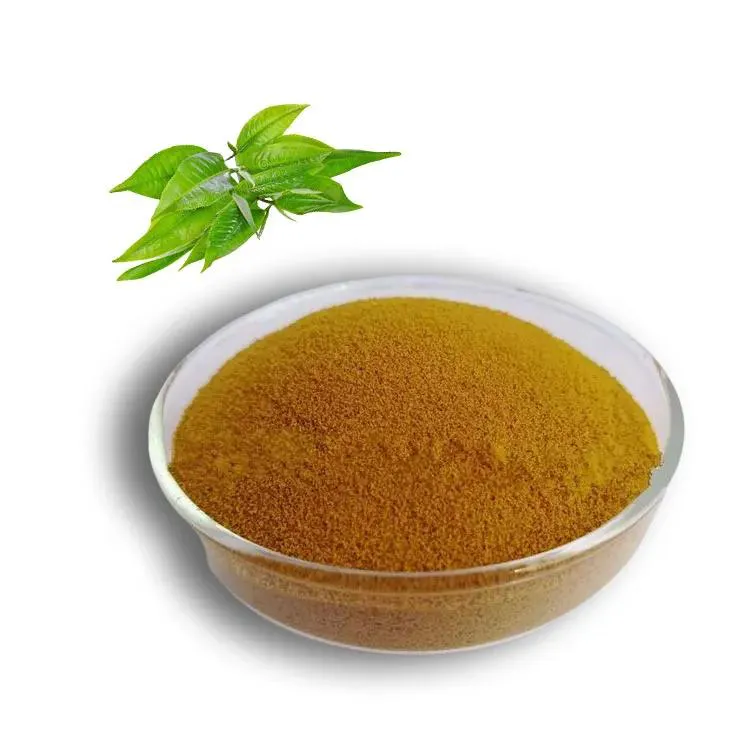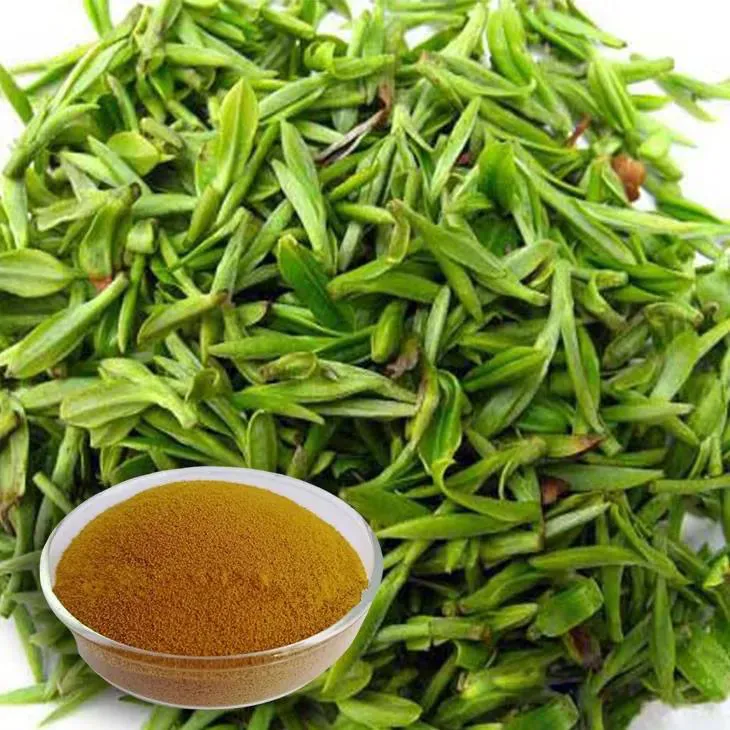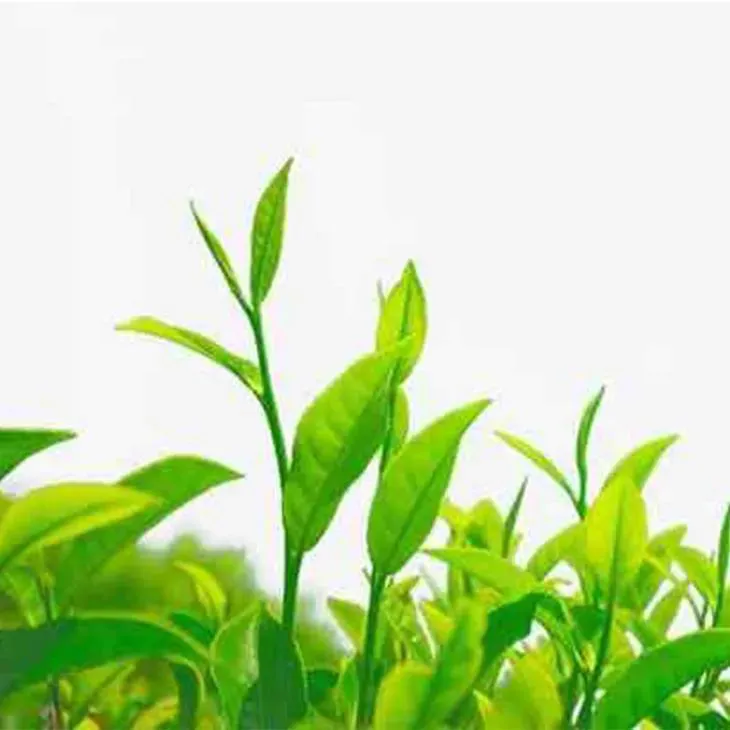- 0086-571-85302990
- sales@greenskybio.com
Green Tea Extract: Uses, Advantages, and Manufacturing Processes
2024-11-12

1. Introduction
Green tea has been an integral part of Asian cultures for centuries, renowned not only for its refreshing taste but also for its potential health benefits. Green Tea Extract, a concentrated form of green tea, has emerged as a highly sought - after ingredient in numerous industries in recent years. It is obtained through a meticulous manufacturing process that aims to preserve and concentrate the active compounds present in green tea leaves.

2. Uses of Green Tea Extract
2.1 Food and Beverage Industry
Green Tea Extract is widely utilized in the food and beverage industry. Its unique flavor profile, which is a combination of earthy, vegetal, and slightly bitter notes, adds a distinct character to various products.
- Tea - based products: In traditional and ready - to - drink teas, green tea extract can be added to enhance the flavor and aroma. It also allows for more consistent quality control compared to using whole tea leaves, as the extract's composition can be precisely measured.
- Beverage additives: Green tea extract is often incorporated into other beverages such as energy drinks, smoothies, and flavored waters. In energy drinks, it not only contributes to the taste but also aligns with the growing consumer demand for more "natural" stimulants, as it contains caffeine in a more natural form compared to synthetic caffeine sources.
- Food products: In the food sector, it can be found in products like ice creams, chocolates, and baked goods. In ice creams, it can add an interesting flavor twist, while in chocolates, it may provide a unique taste experience and potentially appeal to health - conscious consumers due to the perceived health benefits of green tea.
2.2 Cosmetics Industry
The cosmetics industry has also recognized the value of green tea extract. One of its primary uses is as a natural antioxidant.
- Skin protection: Green tea extract helps protect the skin from damage caused by free radicals. Free radicals are unstable molecules that can cause oxidative stress in the skin, leading to premature aging, wrinkles, and a dull complexion. The antioxidants in green tea extract, such as catechins, scavenge these free radicals, thereby reducing the risk of such damage.
- Anti - inflammatory properties: It also exhibits anti - inflammatory effects on the skin. This makes it beneficial for treating various skin conditions such as acne, eczema, and psoriasis. By reducing inflammation, it can help soothe irritated skin and promote a more even skin tone.
- Ingredient in skincare products: Green tea extract is commonly found in a wide range of skincare products, including creams, lotions, serums, and masks. It is often used in products targeted at anti - aging, as it can help improve the elasticity and firmness of the skin.
2.3 Pharmaceutical and Nutraceutical Industries
In the pharmaceutical and nutraceutical industries, green tea extract shows great potential.
- Dietary supplements: Green tea extract is a popular ingredient in dietary supplements. It is often promoted for its potential to support weight loss, as it may increase metabolism and fat oxidation. However, more research is needed to fully understand its effectiveness in this regard.
- Potential in disease prevention: There is growing evidence suggesting that the compounds in green tea extract, such as catechins, may have anti - cancer properties. They are thought to interfere with the growth and spread of cancer cells. Additionally, it may also play a role in reducing the risk of heart disease by improving lipid profiles and reducing blood pressure.

3. Advantages of Green Tea Extract
3.1 Rich in Polyphenols
One of the major advantages of green tea extract is that it is rich in polyphenols, particularly catechins. These are a class of antioxidants that are highly beneficial for health.
- Antioxidant activity: Catechins are potent antioxidants that can neutralize free radicals in the body. By doing so, they help protect cells from damage, which is associated with a reduced risk of various chronic diseases, including cancer, heart disease, and neurodegenerative disorders.
- Anti - inflammatory effects: In addition to their antioxidant properties, catechins also possess anti - inflammatory effects. Chronic inflammation is a key factor in many diseases, and the ability of catechins to reduce inflammation can contribute to overall health improvement.
3.2 Potential Anti - cancer Effects
Emerging research has indicated that green tea extract may have potential anti - cancer effects.
- Cellular mechanisms: Some of the catechins in green tea extract, such as epigallocatechin - 3 - gallate (EGCG), have been shown to interfere with the growth and division of cancer cells. They can induce apoptosis (programmed cell death) in cancer cells, while leaving normal cells unharmed.
- Preventive potential: Green tea extract may also play a role in cancer prevention. Studies have suggested that regular consumption of green tea or its extract may be associated with a reduced risk of certain types of cancers, such as breast, prostate, and colorectal cancer. However, more research is required to establish a definitive causal relationship.
3.3 Other Health Benefits
Beyond its antioxidant and potential anti - cancer properties, green tea extract offers several other health benefits.
- Metabolic effects: It may help boost metabolism, which can be beneficial for weight management. By increasing the body's metabolic rate, it may lead to increased calorie burning and potentially aid in weight loss.
- Cardiovascular health: Green tea extract has been associated with improved cardiovascular health. It may help lower blood pressure, reduce bad cholesterol levels (LDL), and improve the function of blood vessels. These effects contribute to a reduced risk of heart disease.
- Brain health: There is some evidence to suggest that green tea extract may have positive effects on brain health. It may improve cognitive function, reduce the risk of neurodegenerative diseases such as Alzheimer's and Parkinson's, and enhance mental alertness.

4. Manufacturing Processes of Green Tea Extract
4.1 Selection of Green Tea Leaves
The manufacturing process of green tea extract begins with the selection of high - quality green tea leaves. This is a crucial step as the quality of the leaves directly impacts the quality of the final extract.
- Source and variety: Green tea leaves are sourced from different regions around the world, with each region known for producing specific varieties. For example, China and Japan are major producers of high - quality green tea. Different varieties, such as Sencha in Japan or Longjing in China, have distinct flavors and chemical compositions. Manufacturers need to select the appropriate variety based on the intended use of the extract.
- Quality criteria: Leaves are selected based on various quality criteria. These include factors such as the age of the leaves (younger leaves are often preferred as they tend to have a higher concentration of active compounds), the absence of pests and diseases, and the overall appearance and freshness of the leaves.
4.2 Pretreatment of Green Tea Leaves
Once the leaves are selected, they undergo pretreatment.
- Cleaning: The leaves are thoroughly cleaned to remove any dirt, debris, or foreign matter. This is typically done using water and gentle mechanical agitation.
- Withering: After cleaning, the leaves are subjected to withering. This is a process where the leaves are spread out in a controlled environment to lose moisture. Withering helps to break down the cell walls of the leaves, which is beneficial for the subsequent extraction process.
- Steaming or pan - frying: Depending on the manufacturing method, the withered leaves are either steamed or pan - fried. In Japan, steaming is commonly used, which helps to preserve the green color and the natural antioxidants in the leaves. In China, pan - frying is a traditional method that also imparts a unique flavor to the leaves.
4.3 Extraction of Active Compounds
The extraction of active compounds from the pretreated green tea leaves is the core step in the manufacturing process.
- Solvent extraction: One of the most common methods is solvent extraction. In this method, a suitable solvent, such as ethanol or water, is used to dissolve the active compounds from the leaves. The choice of solvent depends on various factors, including the solubility of the target compounds and the desired purity of the extract. Ethanol - based solvents are often used for their ability to extract a wide range of polyphenols effectively.
- Supercritical fluid extraction: Another method is supercritical fluid extraction, which uses supercritical carbon dioxide as the extraction medium. This method has the advantage of being more environmentally friendly compared to solvent extraction, as carbon dioxide is a non - toxic and easily removable gas. It also allows for more precise control over the extraction process, resulting in a higher - quality extract with a more consistent composition.
4.4 Purification and Concentration
After the extraction, the resulting extract undergoes purification and concentration.
- Filtration: The extract is first filtered to remove any solid particles, such as leaf fragments or undissolved substances. Filtration can be done using various methods, such as membrane filtration or vacuum filtration.
- Concentration: The filtered extract is then concentrated to increase the concentration of the active compounds. This can be achieved through methods such as evaporation under reduced pressure or freeze - drying. Concentration is important as it allows for a more potent and stable extract, which is easier to handle and store.
4.5 Quality Control and Packaging
Finally, the green tea extract is subjected to quality control before packaging.
- Quality control: This involves testing the extract for various parameters, such as the concentration of active compounds (e.g., catechins), purity, and absence of contaminants. Quality control measures ensure that the extract meets the required standards for its intended use.
- Packaging: Once the extract passes quality control, it is packaged in suitable containers. Packaging materials are chosen to protect the extract from factors such as light, moisture, and air, which can degrade the quality of the extract over time. Packaging can range from small sachets for individual use in the food and beverage industry to larger containers for industrial use in the cosmetics or pharmaceutical industries.
5. Conclusion
Green tea extract has a wide range of uses and numerous advantages, making it a valuable ingredient in various industries. Its applications in the food and beverage, cosmetics, pharmaceutical, and nutraceutical industries are based on its unique flavor, antioxidant properties, and potential health - promoting effects. The manufacturing process, which involves careful selection of green tea leaves, pretreatment, extraction, purification, and quality control, ensures the production of a high - quality extract. As research on green tea extract continues, it is likely that more uses and health benefits will be discovered, further increasing its importance in the global market.
FAQ:
What are the main uses of green tea extract in the food and beverage industry?
Green tea extract is used in the food and beverage industry mainly for its unique flavor. It can add a fresh and slightly bitter taste to products. Also, due to its potential health - promoting properties, it can be added to products to provide consumers with the benefits associated with green tea, such as antioxidant effects.
How does green tea extract act as an antioxidant in cosmetics?
Green tea extract contains polyphenols like catechins. These compounds can neutralize free radicals in the skin. Free radicals are unstable molecules that can cause damage to skin cells, leading to premature aging and other skin problems. By neutralizing these free radicals, green tea extract helps protect the skin from damage, thus acting as an antioxidant in cosmetics.
What are the key steps in the manufacturing process of green tea extract?
The manufacturing process of green tea extract starts with the careful selection of high - quality green tea leaves. Then, the leaves are typically processed through methods such as drying and grinding. After that, extraction techniques are used to isolate the active compounds. This may involve solvent extraction or other advanced extraction methods to obtain the desired green tea extract.
Can you explain more about the anti - inflammatory effects of green tea extract?
The catechins in green tea extract play a role in its anti - inflammatory effects. These compounds can interact with cells and molecules in the body that are involved in the inflammatory response. By modulating these interactions, green tea extract can help reduce inflammation. For example, it may inhibit the production of certain inflammatory mediators, which helps to alleviate inflammation in the body.
What evidence is there for the potential anti - cancer effects of green tea extract?
Some studies have shown that the polyphenols in green tea extract, especially catechins, may have potential anti - cancer effects. In vitro and in vivo experiments have demonstrated that these compounds can interfere with cancer cell growth, proliferation, and survival. For instance, they may induce apoptosis (programmed cell death) in cancer cells or inhibit angiogenesis (the formation of new blood vessels that tumors need to grow). However, more research is still needed to fully understand and confirm these potential effects in humans.
Related literature
- Green Tea Extract: A Comprehensive Review of Its Health Benefits"
- "The Role of Green Tea Extract in Cosmetics: From Antioxidant to Anti - Aging"
- "Manufacturing Processes of Green Tea Extract: Current Trends and Future Perspectives"
- ▶ Hesperidin
- ▶ citrus bioflavonoids
- ▶ plant extract
- ▶ lycopene
- ▶ Diosmin
- ▶ Grape seed extract
- ▶ Sea buckthorn Juice Powder
- ▶ Beetroot powder
- ▶ Hops Extract
- ▶ Artichoke Extract
- ▶ Reishi mushroom extract
- ▶ Astaxanthin
- ▶ Green Tea Extract
- ▶ Curcumin Extract
- ▶ Horse Chestnut Extract
- ▶ Other Problems
- ▶ Boswellia Serrata Extract
- ▶ Resveratrol Extract
- ▶ Marigold Extract
- ▶ Grape Leaf Extract
- ▶ blog3
-
High purity olive leaf extract
2024-11-12
-
Lavender oil extraction method
2024-11-12
-
100% organic virgin sea buckthorn fruit oil
2024-11-12
-
Lotus leaf extract powder factory in China
2024-11-12
-
China aged garlic extract supplier
2024-11-12
-
Deer antler extract powder manufacturer
2024-11-12
-
Saw palmetto extract vs whole herb
2024-11-12
-
Lavender Extract
2024-11-12
-
Yohimbine Bark Extract
2024-11-12
-
Jujube Extract
2024-11-12
-
Reishi mushroom extract
2024-11-12
-
Sophora Flavescens Root Extract
2024-11-12
-
Pomegranate Extract
2024-11-12
-
Cocoa Extract
2024-11-12
-
Dandelion Leaf Extract
2024-11-12
-
Chia Seed Powder
2024-11-12
-
Curcuma Longa Extract/Turmeric extract
2024-11-12





















